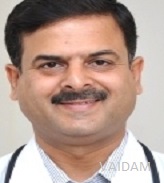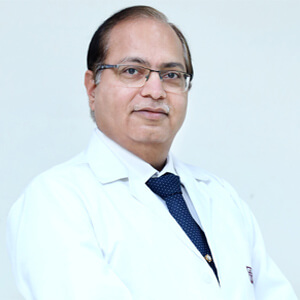A chamber congenital heart defect or ASD could be a hole in the wall between the two higher chambers of your heart or atria. The condition is innate which suggests from birth. Minor chamber body part flaws might reachable their own throughout infancy or babyhood. The heart and lungs are often broken by massive and long-standing chamber body part defects. little defects might never cause a retardant and will be found incidentally. associate adult WHO has had associate unobserved chamber congenital heart defect for many years might have a shortened life, and his death might arise because of heart condition or high-pressure level that affects the arteries within the lungs (pulmonary hypertension). to forestall complications, surgery could also be necessary to repair chamber body part defects to forestall.
A chamber congenital heart defect (ASD) permits freshly ventilated blood to ensure the left higher chamber of the guts (left atrium) into the correct higher chamber of the guts (right atrium). There, it mixes with deoxygenated blood and is pumped-up to the lungs, albeit it’s already rested with O.
If the chamber congenital heart defect is massive, this further blood volume will fill the lungs and overwork the correct facet of the guts. If not treated, the correct facet of the guts eventually enlarges and weakens. If this method continues, the pressure level in your lungs might increase yet, resulting in pneumonic cardiovascular disease.
Many babies born with chamber body part defects haven’t got associated signs or symptoms. In adults, signs or symptoms might begin around age thirty, however, in some cases, signs and symptoms might not occur till decades later.
Atrial congenital heart defect signs and symptoms might include:
- Shortness of breath, particularly once physical exertion
- Fatigue
- Swelling of legs, feet or abdomen
- Heart palpitations or skipped beats
- Stroke
- Heart murmur, a whooshing sound that may be detected through a medical instrument
People might experience:
Heart: irregular pulse rate, murmur, or palpitations
Respiratory: pulmonary cardiovascular disease or shortness of breath
Also, common: failure to thrive, fatigue, or stroke
Detection and Diagnosis
Atrial body part defects are often many varieties, including:
- Secundum: this is often the foremost common style of ASD and happens within the middle of the wall between the atria (atrial septum).
- Primum: This defect happens within the lower a part of the chamber septum and will occur with different innate heart issues.
- Sinus venosus: This rare defect sometimes happens within the higher a part of the chamber septum.
- Coronary sinus: during this rare defect, a part of the wall between the venous sinus — that is an element of the vein system of the guts — and therefore the atrium of the heart is missing.
Tests required: –
Echocardiogram: throughout associate sonogram, sound waves area unit want to manufacture a video image of the guts. It permits your doctor to ascertain your heart’s chambers and live their pumping strength. This look at additionally checks heart valves and appears for any signs of heart defects. Doctors might use this look at to judge your condition and confirm your treatment arrange.
Chest X-ray: associate X-ray image helps your doctor to ascertain the condition of your heart and lungs. associate X-ray might determine conditions although a heart defect that will make a case for your signs or symptoms.
Electrocardiogram (ECG): This looks at records the electrical activity of your heart and helps determine cardiac rhythm issues.
Cardiac catheterization: during this look at, a thin, versatile tube (catheter) is inserted into a vessel at your groin or arm and target-hunting to your heart. Through catheterization, doctors will diagnose innate heart defects, look at however well your heart is pumping and check the performance of your heart valves. Doctors may use catheterization techniques to repair heart defects.
Computerized tomography (CT) scan: A CT scan uses a series of X-rays to make elaborated pictures of your heart. A CT scan could also be wont to diagnose associate chamber congenital heart defect if the diagnostic procedure hasn’t diagnosed associate chamber congenital heart defect.
Treatment Methods
Treatment consists of corroboratory care
Small ASDs might shut on their own. Medium-to-large-sized ASDs may have closure by device or surgical correction.
Medical observance
If your kid has associate chamber congenital heart defect, your child’s heart specialist might suggest observance it for an amount to ascertain if it closes on its own. Your kid’s doctor can decide once your child desires treatment, looking at your kid’s condition and whether or not your child has the other innate heart defects.
Medications
Medications will not repair the outlet; however, they will be wont to scale back a number of the signs associated symptoms that may accompany a chamber congenital heart defect. medicine may be wont to scale back the danger of complications when surgery. Medications might embrace those to stay the heartbeat regular (beta blockers) or to cut back the danger of blood clots (anticoagulants).
Surgery
Many doctors suggest repairing associate chamber congenital heart defect diagnosed throughout childhood to forestall complications as an associate adult. Doctors might suggest surgery to repair medium- to large-sized chamber body part defects. However, surgery is not counselled if you have got the severe pneumonic cardiovascular disease as a result of it would create the condition worse.
For adults and youngsters, surgery involves stitching closed or reparation the abnormal gap between the atria. Doctors can appraise your condition and confirm that procedure is most acceptable. chamber body part defects are often repaired exploitation 2 methods:
-
- Cardiac catheterization:
During this procedure, doctors insert a skinny tube (catheter) into a vessel within the groin and guide it to the guts exploitation imaging techniques. Through the tubing, doctors set a mesh patch or plug into place to shut the outlet. the guts tissue grows round the mesh, for good protection the outlet. this sort of procedure could also be performed to repair solely the secundum style of chamber body part defects. Some massive secundum chamber body part defects might not be able to be repaired through viscus catheterization and will need heart surgery.
-
- Open-heart surgery.
This sort of surgery is finished beneath anaesthesia and needs the employment of a pump. Through associate incision within the chest, surgeons use patches to shut the outlet. This procedure is that the most well-liked treatment for sure varieties of chamber body part defects (primum, sinus venosus and coronary sinus), and these varieties of chamber defects will solely be repaired through heart surgery. This procedure may be conducted exploitation little incisions (minimally invasive surgery) for a few varieties of chamber body part defects.
Treatment Duration
The procedure usually takes one to two hours; however, it will take longer.
The heart specialist can counsel the time of discharge. the kid can get to keep in the hospital for a minimum of four to six hours when the procedure. Most of the time the youngsters will get back on an equivalent day because the procedure finishes. sonogram is finished when the procedure. This look at is to create certain that there’s no fluid round the heart.
Precautions
- Quit smoking
- Manage high cholesterol
- Manage high blood pressure and diabetes
- Exercise regularly
- Reach and maintain a healthy weight
- Eat a heart-healthy diet
- Control stress and anger
- Take all medications as directed
- Take part in a cardiac rehabilitation program
- See your doctor for regular follow-up visits
Success rate
The success rate of the Atrial Septal defect is 95% and the procedure usually takes 1 to 2 hours, but it can take longer.
Care after the procedure
The cardiologist will suggest the time of discharge. The child will have to stay in the hospital
for at least 4 to 6 hours after the procedure. Most of the time the children can go home on the same day as the procedure finishes. Echocardiogram is done after the procedure. This test is to make sure that there is no fluid around the heart.







